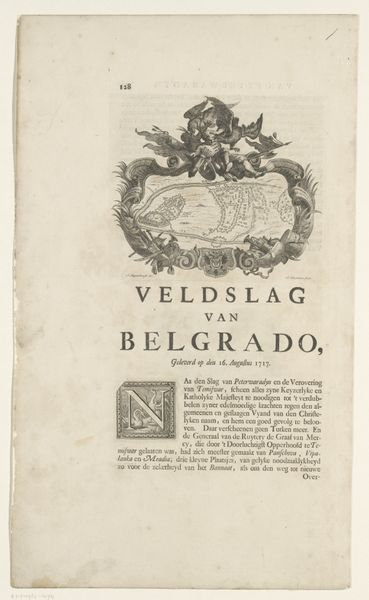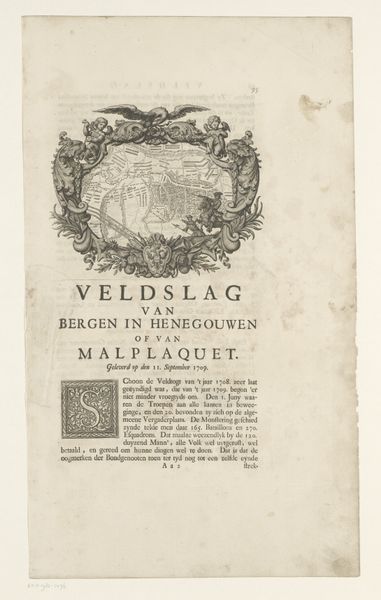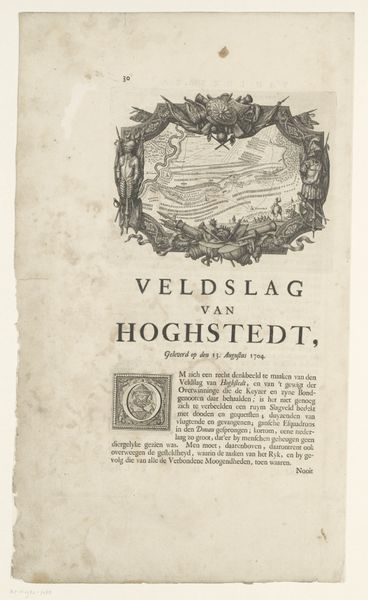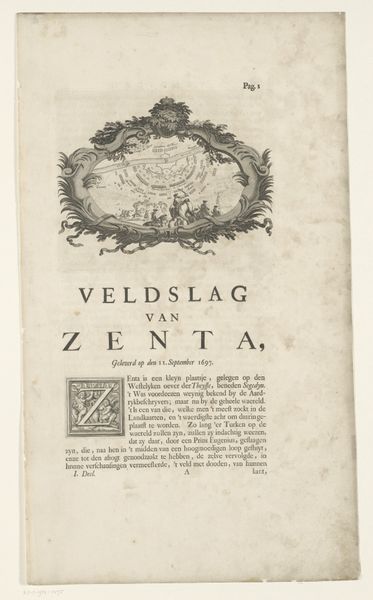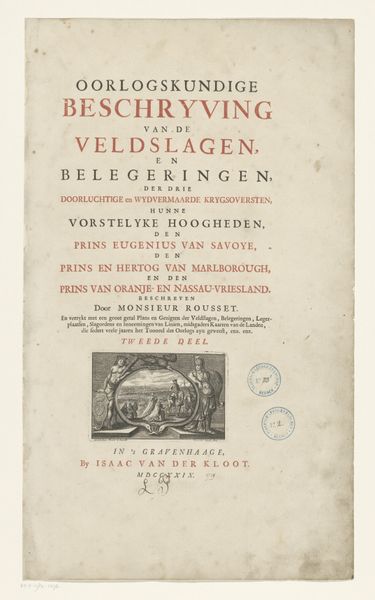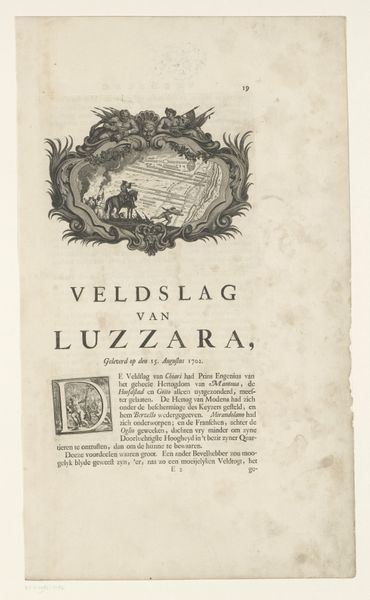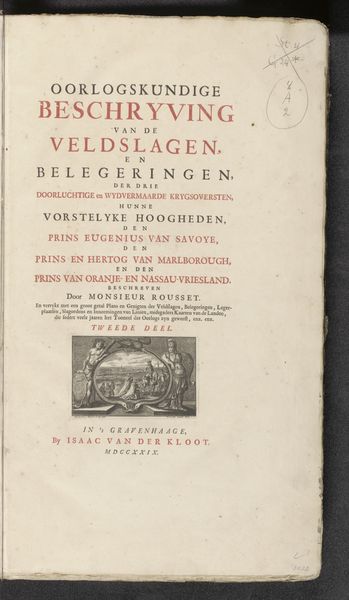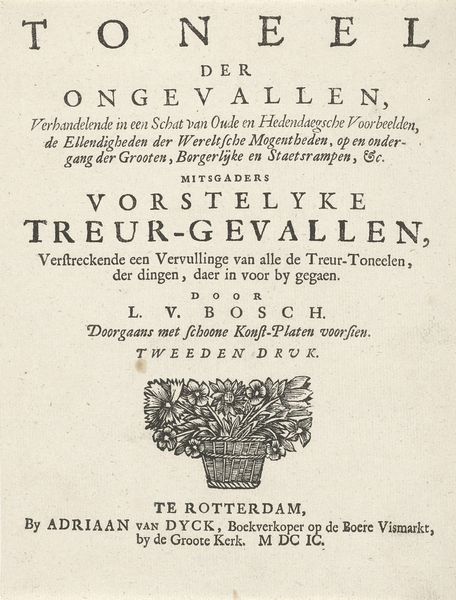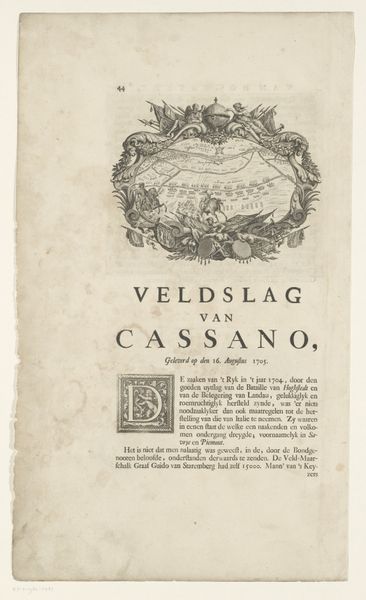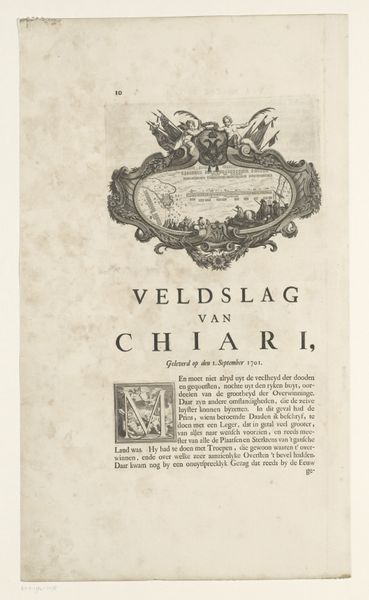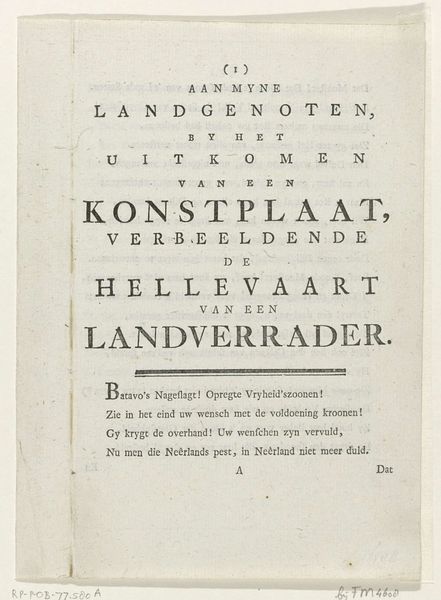
print, paper, engraving
#
baroque
# print
#
paper
#
history-painting
#
engraving
Dimensions: height 167 mm, width 204 mm, height 520 mm, width 302 mm
Copyright: Rijks Museum: Open Domain
Editor: This is an engraving from 1729 by Jan Wandelaar, titled "Slag bij Oudenaarde, 1708," or "Battle of Oudenaarde." It seems to be a print of a battle scene with decorative baroque framing. What do you see in this piece, particularly concerning its depiction of war and power? Curator: What I see here is more than just a depiction of a historical battle; it's a constructed narrative about power, politics, and national identity. The Baroque style framing, almost celebratory in its ornamentation, contrasts sharply with the harsh realities of warfare. We need to consider the context. This print was made long after the battle itself. How does Wandelaar use this historical distance? Editor: That’s interesting. I hadn’t thought about the distance influencing the work. Is it a way of sanitizing the conflict, almost turning it into a spectacle? Curator: Exactly. Notice the elevated viewpoint, creating a sense of detachment, almost like looking at a game board. It abstracts the human cost. Consider who this print was made for and what narratives it was intended to support. Was it designed to bolster a particular political viewpoint or legitimize those in power? How does it address or ignore the experiences of different social classes involved in the conflict? Editor: So, it’s less about documenting the battle itself and more about reinforcing a specific, probably propagandistic, version of history? Curator: Precisely. Think about who controls the narrative, who is remembered, and who is forgotten. This image becomes a tool for shaping collective memory, silencing certain voices, and amplifying others, creating a powerful visual statement on war. Editor: That completely shifts my perspective on it. I was just seeing a historical image, but now I see it as a piece of propaganda masked as art. Thanks. Curator: Understanding art in this way helps us decipher visual culture and its underlying socio-political mechanics.
Comments
No comments
Be the first to comment and join the conversation on the ultimate creative platform.


